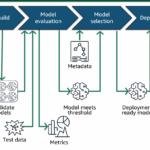The Overlooked Risks Hidden in Today’s Software Supply Chain
When people talk about supply chains, they picture factories, trucks, and containers. But every software product has its own software supply chain: the libraries, frameworks, and packages woven together to form the codebase.
And like any physical supply chain, if one link breaks, the entire system is at risk.
In our full-lifecycle due diligence work, we see the same issues surface again and again. Three risks stand out as both underestimated and potentially devastating: legal, security, and maintenance.
Legal Risks: The License Time Bomb
When open-source freedom becomes liability
Open-source licenses are not just fine print , they are binding contracts. GPL, MIT, Apache, and commercial variants each impose conditions on how code can be used and distributed.
A single overlooked dependency with a restrictive license can derail a funding round, force emergency refactors, or even spark litigation. We’ve seen SaaS teams lose precious valuation points because a due diligence audit uncovered GPL code in their proprietary stack.
If you’re not familiar with the ecosystem, Choose a License and the FSF License List are good starting points.
Best practices for license governance
- Automate license scanning across repos with Software Composition Analysis (SCA) tools.
- Review edge cases manually , automation alone misses context.
- Integrate license checks into CI/CD so issues are caught before release, not during M&A
Security Risks: Vulnerabilities and Ghost Code
Inherited vulnerabilities: Log4Shell and beyond
The infamous Log4Shell vulnerability (CVE-2021-44228) did not come from careless engineers , it came from a widely used logging library. Most companies didn’t even know they were exposed until attackers were already probing their systems.
This is the reality of software supply chains: the riskiest code may not be yours.
Malicious packages in the wild
Beyond abandoned libraries, attackers now deliberately publish malicious packages to popular registries (npm, PyPI). A single npm install can pull in typosquatted or backdoored code without developers noticing.
The CNCF supply chain security paper is an excellent overview of this growing threat.
Best practices for security governance
- Use SCA tools such as OWASP Dependency-Check to flag known CVEs, but don’t stop there.
- Define patch cadences so vulnerabilities are fixed before customers notice.
- Establish escalation paths when upstream maintainers go silent.
Maintenance Risks: When the Supplier Shuts Down the Line
The fragility of volunteer-maintained code
Even “safe” libraries eventually lose maintainers. If your core product depends on an abandoned repo, you inherit that risk. We frequently uncover SaaS products where critical dependencies haven’t been updated in three years , but remain in production.
When those libraries break, it’s your engineers who scramble, and your customers who lose confidence.
For perspective, look at PHP’s official end-of-life schedule: entire versions are still running in production long after they stopped receiving updates.
Why It Matters: Investor and Founder Perspectives
For investors, buying into a software company means buying into its future risk profile, not just today’s code. Hidden supply chain liabilities can lead to valuation erosion, delayed exits, or unexpected re-platforming costs.
For founders, every line of borrowed code is a promise to customers. When dependencies fail, legally, securely, or operationally, that trust erodes, and so does growth.
This is why we benchmark supply chain resilience alongside SRE and DORA norms in our audits: activity alone doesn’t equal impact.
Turning Blind Bets into Data Backed Growth
The software supply chain is no longer an afterthought. It’s a board-level concern.
At Opsintell, we integrate software supply chain due diligence into our lifecycle audits , checking licenses, measuring security exposure, and stress-testing maintenance paths.
Because no investor should overpay for brittle software. And no founder should lose customers to a preventable dependency failure.
Would you ship a car without validating its parts? Then why ship software differently?


